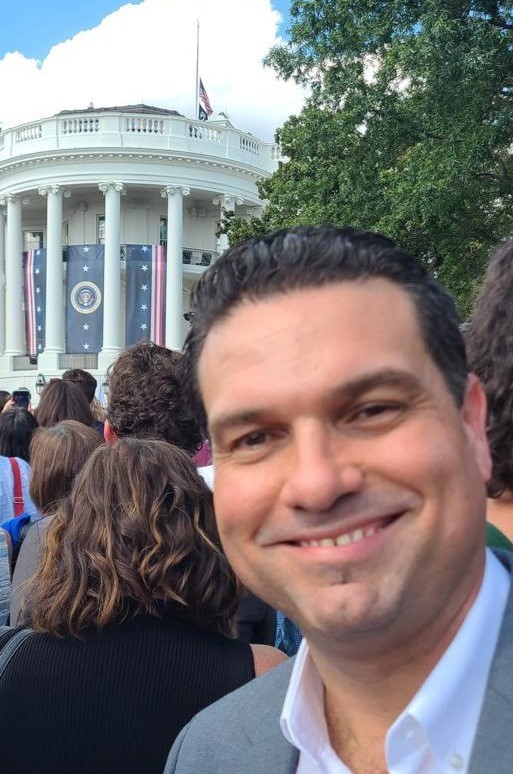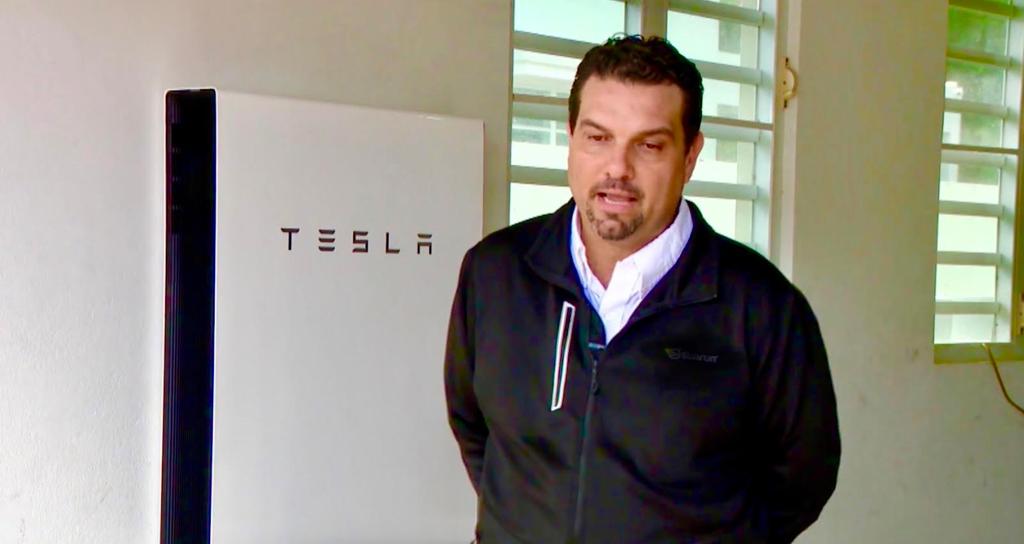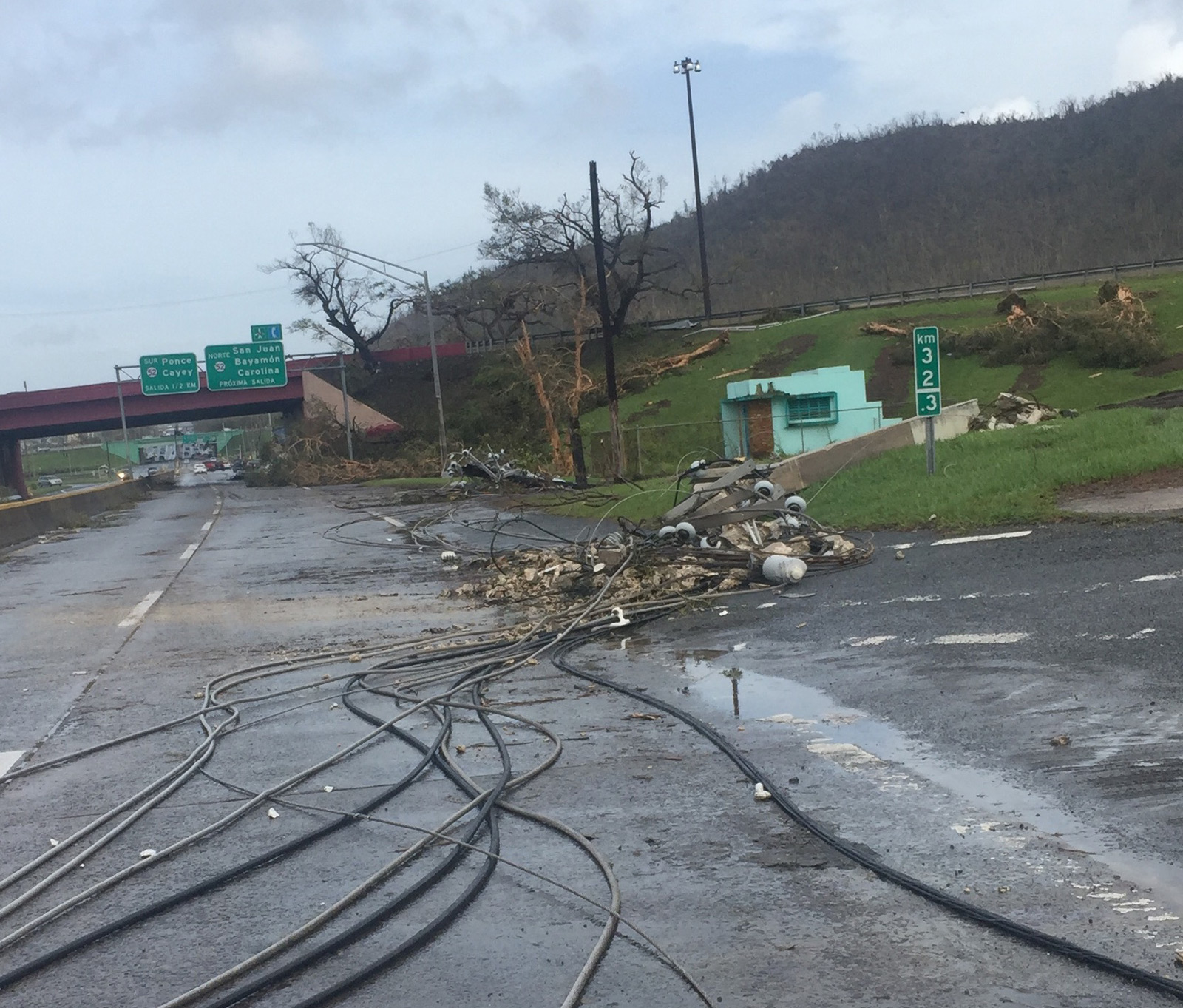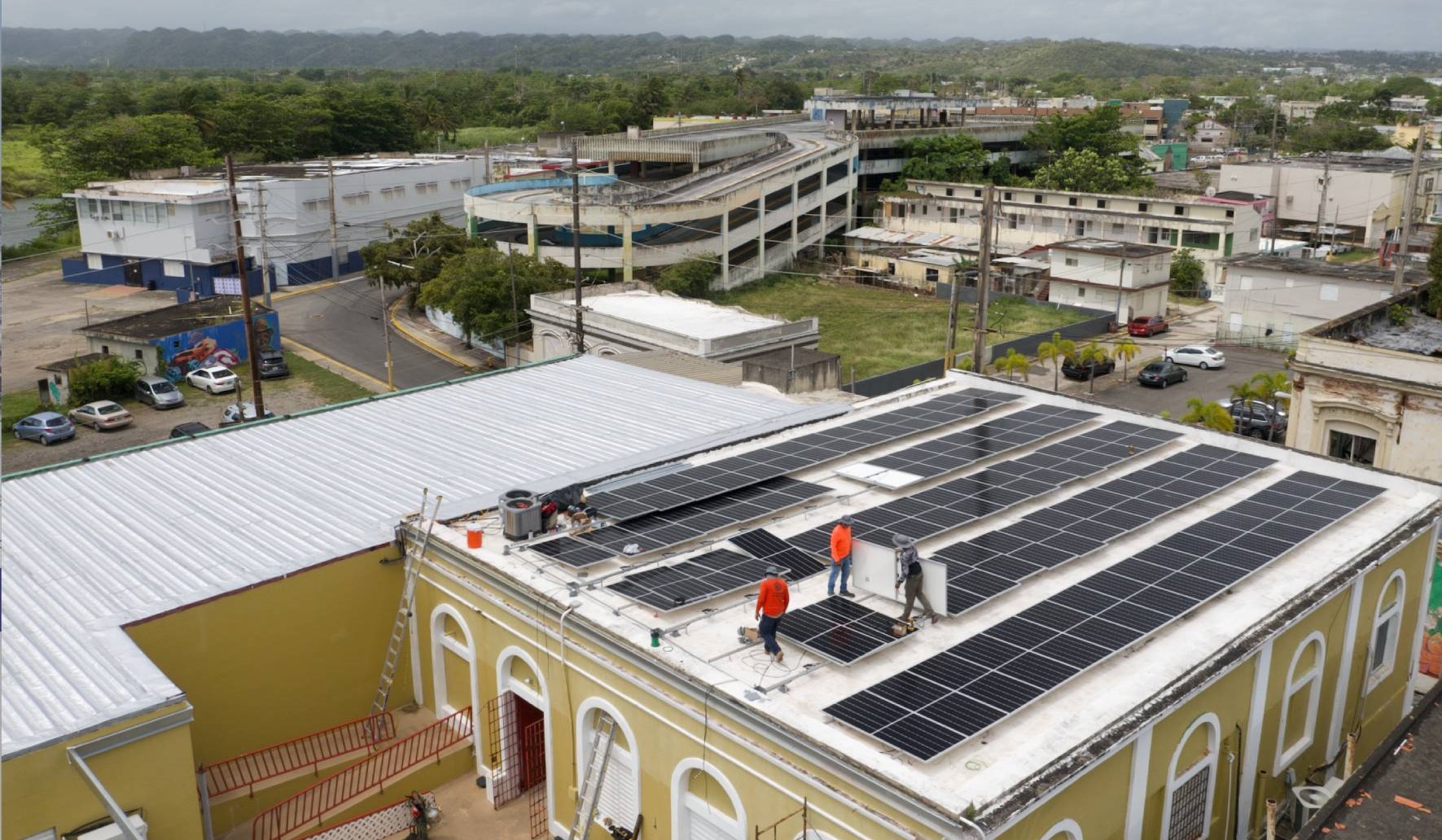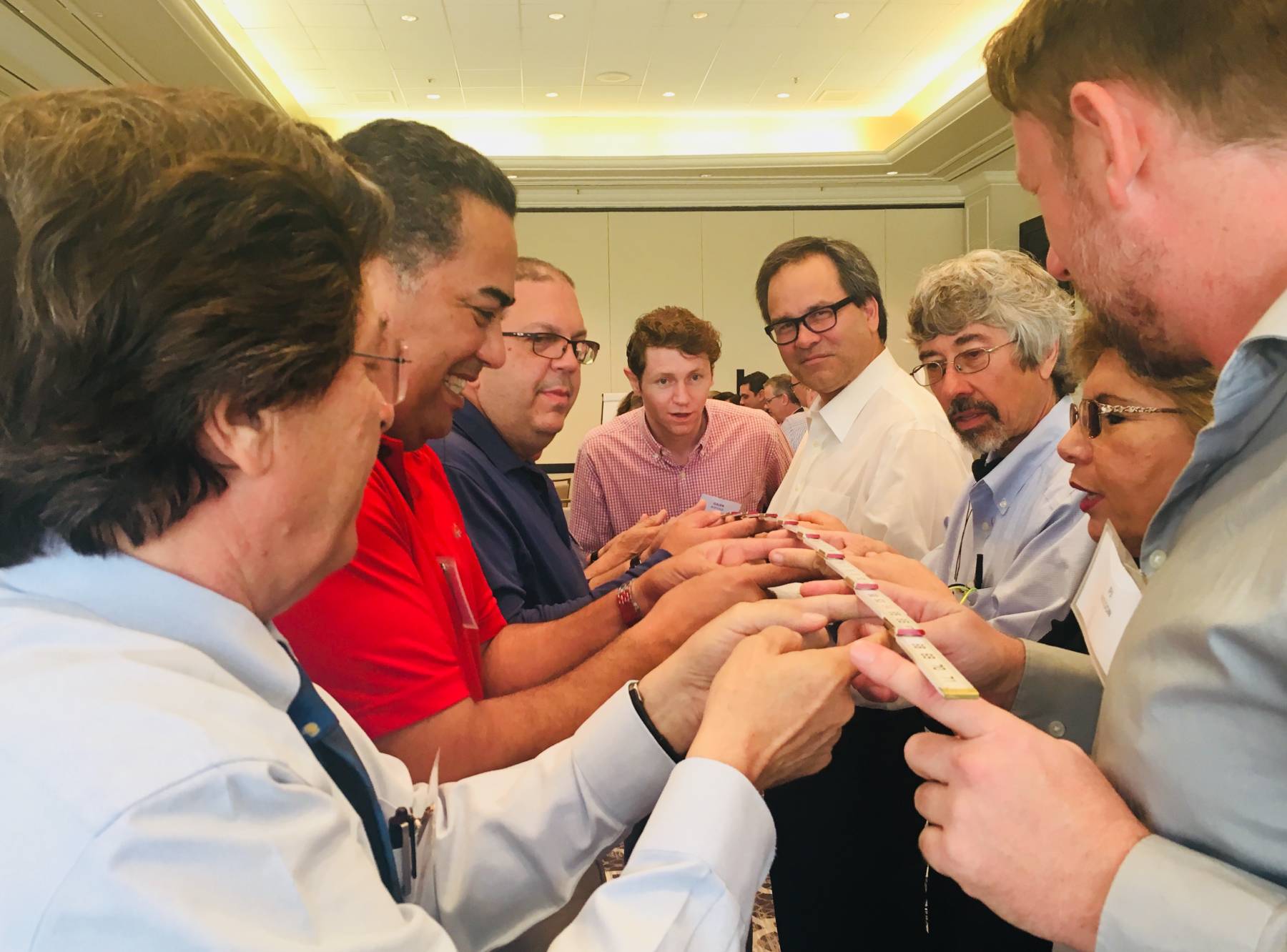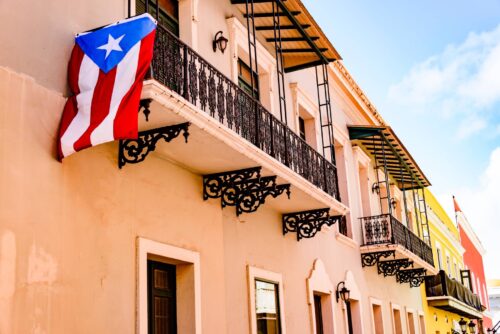
Hurricane-Proof Energy for Puerto Rico
Last month, Hurricane Fiona devastated Puerto Rico’s grid. Local energy expert Javier Rúa shares how the Inflation Reduction Act could revitalize the island's energy systems and economy once and for all.
Hurricane Fiona underscored the fragilities of Puerto Rico’s electric grid causing an island-wide blackout that lasted for weeks. Striking landfall just three days before the five-year anniversary of Hurricane Maria that caused the longest blackout in US history, Fiona’s destruction to the grid was a stark reminder that recovery efforts after Maria were not enough.
The need for transformative investment in the islands energy system is dire — not only for resilient energy, but for affordable energy. Puerto Rico has the lowest GDP per capita and highest poverty rate in the United States. The average Puerto Rican pays over double the price for electricity compared with those living in the mainland United States, meaning most community members have a particularly high energy burden (i.e., the percentage of household income that goes toward energy costs).
Fortunately, the landmark Inflation Reduction Act (IRA) has sweeping climate and energy policies that could provide resilience against climate disasters and, paired with other strategies, finally address Puerto Rico’s energy system failures.
So, what does the IRA hold for the island territory?
To find out, we asked Javier Rúa-Jovet, who advocated for Puerto Rico-related policy within this landmark climate bill. Rúa is currently the chief policy officer at the Solar and Energy Storage Association of Puerto Rico (SESA-PR), an organization that advocates for policy shifts to foster the growth of resilient, clean, solar and energy storage on the island. He has also been a partner of RMI for nearly five years.
Javier Rúa Jovet takes a selfie at the White House Celebration of the Inflation Reduction Act this September. Photo credit to Javier Rúa Jovet.
Together, Rúa, RMI, and over 40 local Puerto Rican stakeholders collaborated on passing a groundbreaking energy policy into law. Known as Act 17, this law established a variety of landmark legislations including goals for 40 percent renewable energy generation by 2025 and 100 percent by 2050, to ultimately achieve a clean, resilient, thriving future for the island. Here’s what Rúa has to say about the IRA and Puerto Rico:
1. Since Hurricane Maria in 2017, Puerto Rico has had a hankering for resilient microgrids. This desire is only growing during Hurricane Fiona recovery as solar has been a lifeline.
Hurricane Maria made it crystal clear that Puerto Rico must move toward a decentralized energy model rooted in renewables. Renewables provide local energy sources that are accessible during an apocalyptic event like Hurricane Maria. Puerto Rico spends $3 to $4 billion a year importing fuel. However, investing a fraction of that money in renewable energy sources, particularly harnessing the inexhaustible power of the sun, would mean immediate energy savings to consumers and communities of all income levels.
Javier in front of the battery which stores energy, a part of his home solar plus storage microgrid. Photo credit to Javier Rúa Jovet.
Solar and storage in a blackout means running and managing your own home microgrid. And it actually becomes a “gamified” way to become quite energy efficient. During Hurricane Fiona, I became smart quickly about conserving electrons, turning off what I didn’t need, and prioritizing critical loads like my family’s refrigerator, lights, internet and phones. Using a smart app to control the system, you can see what is going on real time. It is empowering.
That feeling is very far removed from the anxiety I experienced after Hurricane Maria in 2017 — dealing with a noisy, polluting propane generator for over a month. I spent over $4,000 on fuel that, when burned, released strong fumes and noises, signaling an imminent breakdown. None of this happens with solar plus storage.
Power lines down in Puerto Rico after Hurricane Maria in 2017. Photo credit RMI.
We want a highly distributed energy system that, unlike highly centralized grids, can survive impacts of extreme weather. Solar-plus-storage microgrids offer a solution as they can decouple and operate independently of the main grid during blackouts. This allows for continuity of electricity and services when they’re needed most. We champion a highly decentralized, bottom-up grid approach that starts with personal microgrids, aggregated microgrids, then community microgrids, all the way to municipal or even larger solar and storage systems. A bottom-up approach is the resilient path forward.
2. Not all policies in the Inflation Reduction Act are applicable to Puerto Rico; these are the important ones that are.
Since Puerto Rico holds commonwealth status, the vast majority of Puerto Ricans don’t pay federal taxes. That has made it virtually impossible for the territory to directly access investment tax credits (ITCs) to build out renewable energy systems and storage. To date, the only way to consistently leverage ITC benefits in Puerto Rico is via systems operated by third-party owners, such as Sunrun and Sunnova. These constitute most of the over 55,000 residential microgrids installed on the island.
Fortunately, the IRA creates an ITC that is directly payable to non-taxable entities, such as nonprofits, local governments, and tribal nations. This innovation should allow Puerto Rico investors of clean energy infrastructure to stably access this funding incentive for the first time ever! For the island to unlock this groundbreaking benefit, stakeholders await specific guidance from the Department of the Treasury by the end of this calendar year.
Also, for the first time, the IRA establishes an ITC specifically for energy storage. Before, to get the ITC for energy storage, batteries had to be specifically paired with a renewable energy source.
The ITC also applies independently to microgrid controllers — automated equipment to manage the various components of the microgrid and prevent power outages. To access these incentives, developers of microgrid controllers and storage need to abide by labor standards, including a living wage. Even more, the credit includes bonuses for projects that serve low-income neighborhoods and housing.
The IRA, through the Greenhouse Gas Reduction Fund, also provides an opportunity for green banks, including the newly created Puerto Rico Energy Trust, to access liquidity to finance new clean energy projects. Ultimately, this means more flexibility and access to grants for local solar and storage microgrids.
The Community Energy Resilience Initiative (CERI) is piloting a new financial model to scale equitable access to affordable, clean power. A critical facility in Arecibo, Puerto Rico, a part of CERI, is projected to save 15 percent on electrical bills from day one. Photo credit RMI.
3. The Inflation Reduction Act will accelerate solar microgrid projects in Puerto Rico — helping the island drive toward its ambitious goal of 40 percent renewable energy by 2025.
Most microgrids installed to date are for individual houses. Every month, well over 3,000 new solar plus storage systems are installed, adding to the over 55,000 of the island’s homes that already went solar. Even though it is scaling quickly, this is just a drop in the bucket, with less than 5 percent of the island’s power currently coming from renewables.
The Inflation Reduction Act addresses one of the biggest barriers to scaling solar energy microgrids: accessing finance through tax incentives and financial liquidity.
In 2018, after Hurricane Maria wreaked havoc on the island’s power system, Rúa and Puerto Rican stakeholders convened to discuss reimagining the grid system to be reliable, affordable, and clean. Photo credit to RMI.
4. Investing in clean energy microgrids now costs less than diesel — and the advantages will only grow.
Puerto Rico is currently around 96 percent dependent on fossil fuel imports for electricity, and this is incredibly costly. The IRA supports building renewable energy systems that lock in lower electricity prices for consumers. Clean energy costs at least 33 percent less than fossil fuels — and once installed, the cost to operate is very low, since the sun is free.
In Puerto Rico the retail price of electricity is over $0.30 per kWh, whereas large-scale solar is currently priced at around $0.10 per kWh. Once you build solar, the costs do not fluctuate. In contrast, diesel prices will fluctuate with global supply and demand, causing electricity price adjustments to customers.
5. The acceleration of Puerto Rico’s energy transition through the IRA can be trendsetting.
In Puerto Rico, outages are an everyday reality. For Puerto Ricans, the climate crisis is a clear and present danger, not a potential threat. Climate change already hit us on an apocalyptic scale after Hurricane Maria — resulting in the longest power outage in US history, and 3,000 dead – and most recently Hurricane Fiona — resulting in an island-wide blackout felt by over 1.3 million residents.
The IRA goes a long way in making sure that the technologies that we know work, like microgrids at all scales, are funded in Puerto Rico. The speedy build out of these technologies could make Puerto Rico an example for others to follow, particularly in other jurisdictions vulnerable to climate change.
Rúa closed by sharing, “Passage of the Inflation Reduction Act gives new hope to our chances of converting Puerto Rico into an entirely renewable energy-powered island. But there is still much work to be done — including development of all the rules at both the federal level and in Puerto Rico to implement this new landmark climate law.”
In early November, Solar and Energy Storage Association of Puerto Rico (SESA-PR) will be hosting its 6th Annual SESA Summit to present and discuss solutions to the island’s current energy challenges, clearing the pathway for renewables. Jennifer M Granholm, Secretary of the US Department of Energy, is a keynote speaker. Rúa believes this validates the Biden Administration’s commitment to reimagining Puerto Rico’s energy future to be cleaner, affordable, and resilient.
Register to attend the 6th Annual SESA Summit here.
For more, sign up to receive islands program updates here.
